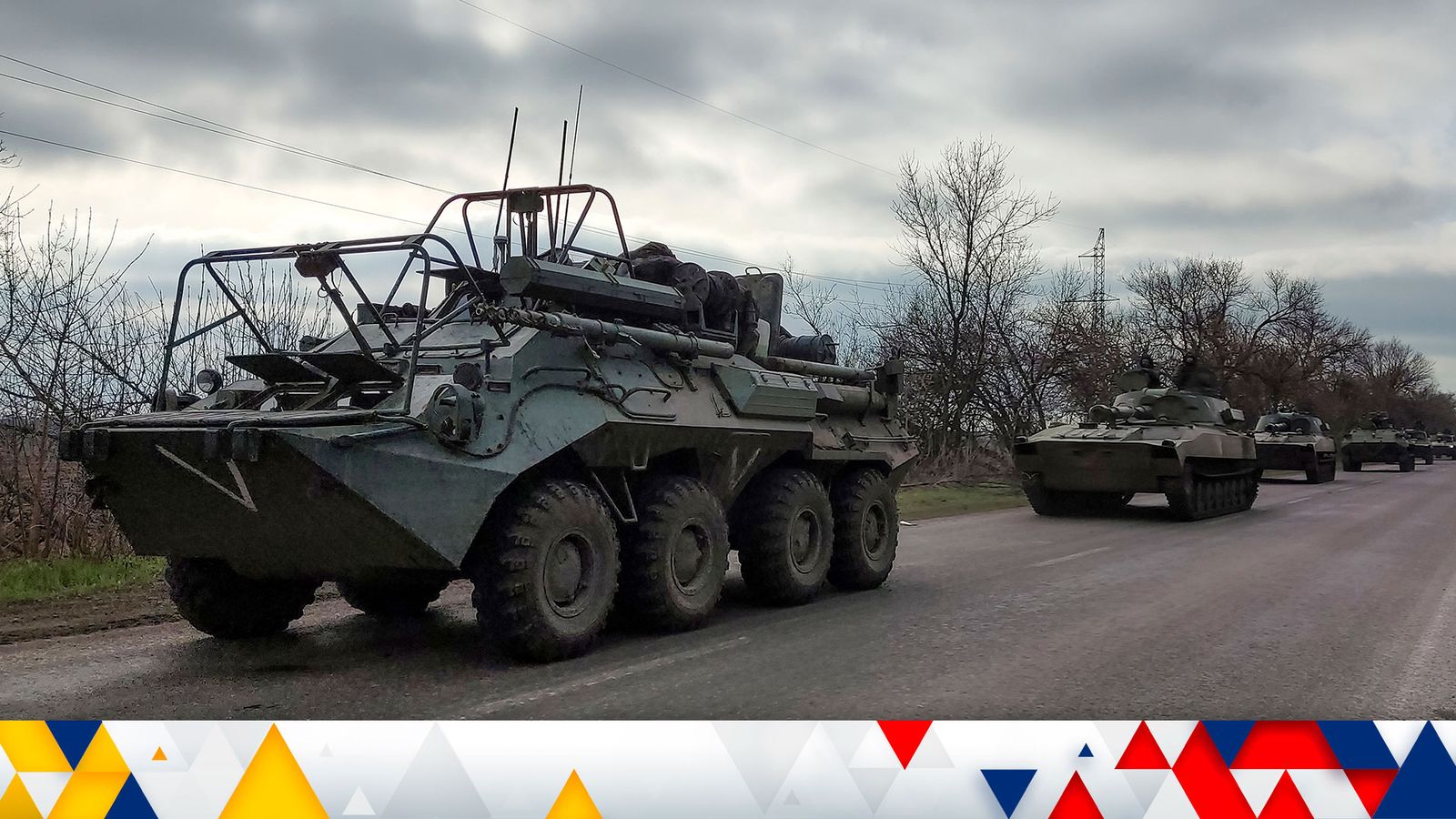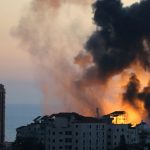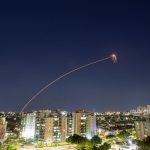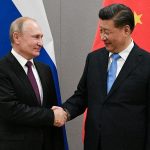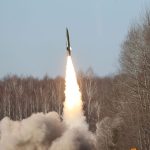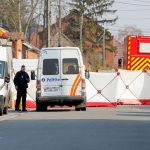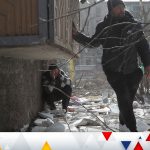The Russian offensive in the breakaway Donbas region of eastern Ukraine is “building” and is expected to peak in the next two to three weeks, according to Sky’s defence analyst Michael Clarke.
He also said what happens between now and the end of this month will determine how much room for manoeuvre President Vladimir Putin has and what his military options are in the invasion – as so far “they don’t look terribly good”.
Professor Clarke said that Mr Putin is starting to realise that his options are getting “rather limited” because in Monday’s Victory Day speech in Moscow “he didn’t say anything about what else the war might achieve”.
The analyst said the Russian leader was “quite conservative about defending what his forces have already taken in the Donbas and Crimea, and in the land bridge in between”.
Russia is focusing on “liberating” Donbas as part of its “special military operation” after withdrawing from the north of Ukraine earlier in the war following stiff Ukrainian resistance.
China warns of lasting threat to global peace – follow latest Ukraine updates
Russian-backed separatists control part of the Luhansk and Donetsk regions which jointly make up the Donbas and Mr Putin wants it entirely in pro-Russian hands.
Prof Clarke said the Ukrainians have been launching local counter-attacks and they are starting to hold the Russians in certain places and push them back, particularly further north in Kharkiv, the country’s second biggest city.
He said the Ukrainians will now have to decide whether to dig and try to go toe-to-toe with Mr Putin’s forces and defend every position as fiercely as possible.
Or they could “trade space for time to actually let the attack come on a bit, draw back a little bit, wait, and then try and hit back hard when the attackers have used up ammunition and fuel – and some of the momentum has worn off”.
He added: “There’s no right answer to that question. That depends on time and chance and the circumstances and what the local commanders decide.”
“But whatever the Ukrainians do decide over the next two or three weeks, and however the Russians play the way that their bigger attack will develop, will tell us what’s going to happen next in the Donbas.”
Other key developments:
• Russian forces continue to attack Azovstal steelworks – last bastion of Ukrainian resistance in ruined Mariupol
• Scores of civilians evacuated, but aide to city’s mayor says at least 100 remain inside
• Russian troops pound Odesa port in apparent effort to disrupt supply lines and Western weapons shipments
• Eight to 10 Russian generals killed in war, says top US intelligence official
Please use Chrome browser for a more accessible video player
It comes as Ukraine said its forces had recaptured villages from Russian troops north and northeast of Kharkiv, building on a counter-offensive that could signal a shift in the war’s momentum and jeopardise Russia’s main advance.
Tetiana Apatchenko, from the 92nd Separate Mechanised Brigade, the main Ukrainian force in the area, confirmed that Ukrainian troops had recaptured in recent days the settlements of Cherkaski Tyshky, Ruski Tyshki, Borshchova and Slobozhanske.
Yuriy Saks, an adviser to defence minister Oleksiy Reznikov, said his troops were pushing Russian forces out of range of Kharkiv, which has been under constant bombardment since the war began.
The counter-attacks could signal a new phase in the war, with Ukraine going on the offensive after weeks in which Russia mounted a massive assault without making a breakthrough.
Subscribe to Ukraine War Diaries on Apple Podcasts, Google Podcasts, Spotify and Spreaker
By pushing back Russian forces who had occupied the outskirts of Kharkiv since the start of the invasion, the Ukrainians are moving into striking distance of the rear supply lines sustaining the main Russian attack force further south.
“They’re trying to cut in and behind the Russians to cut off the supply lines, because that’s really one of their (the Russians’) main weaknesses,” said Neil Melvin of the think-tank, RUSI.
“Ukrainians are getting close to the Russian border. So all the gains that the Russians made in the early days in the northeast of Ukraine are increasingly slipping away.”
